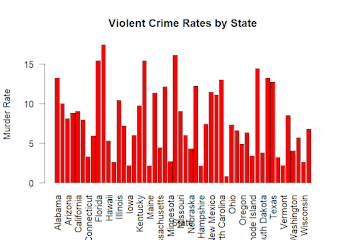Module # 6 Assignment
Module #6 Assignment
First, let's generate a simple dataset for demonstration purposes. We'll create data representing the sales of different products:
```R
# Creating sample dataset
product_names <- c("Product A", "Product B", "Product C", "Product D")
sales <- c(1500, 2200, 1800, 2700)
# Combine into a data frame
sales_data <- data.frame(Product = product_names, Sales = sales)
```
Now, let's create a basic bar chart to visualize this data:
```R
# Load necessary library for plotting
library(ggplot2)
# Create bar chart
bar_chart <- ggplot(sales_data, aes(x = Product, y = Sales)) +
geom_bar(stat = "identity", fill = "skyblue") +
labs(title = "Sales of Different Products",
x = "Product",
y = "Sales") +
theme_minimal()
# Display the bar chart
print(bar_chart)
```
1. Clarity: The bar chart effectively displays the sales figures for each product, making it easy for viewers to compare the performance of different products.
2. Simplicity: The visualization is simple and straightforward, focusing on conveying the sales data without unnecessary clutter.
3. Relevance: The choice of a bar chart is appropriate for comparing quantities (sales) across different categories (products).
4. Labeling: Both axes are clearly labeled, providing context for the data being presented.
5. Color: The use of color (sky blue) is minimal but helps differentiate the bars, enhancing readability without distracting from the main message.
Overall, this basic bar chart aligns well with the principles of basic visualization discussed by Few and Yau. It effectively communicates the sales data clearly and concisely.


.png)
Comments
Post a Comment